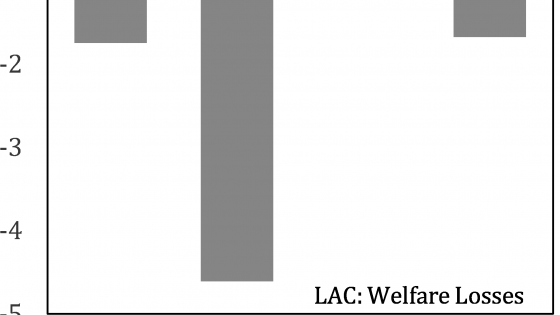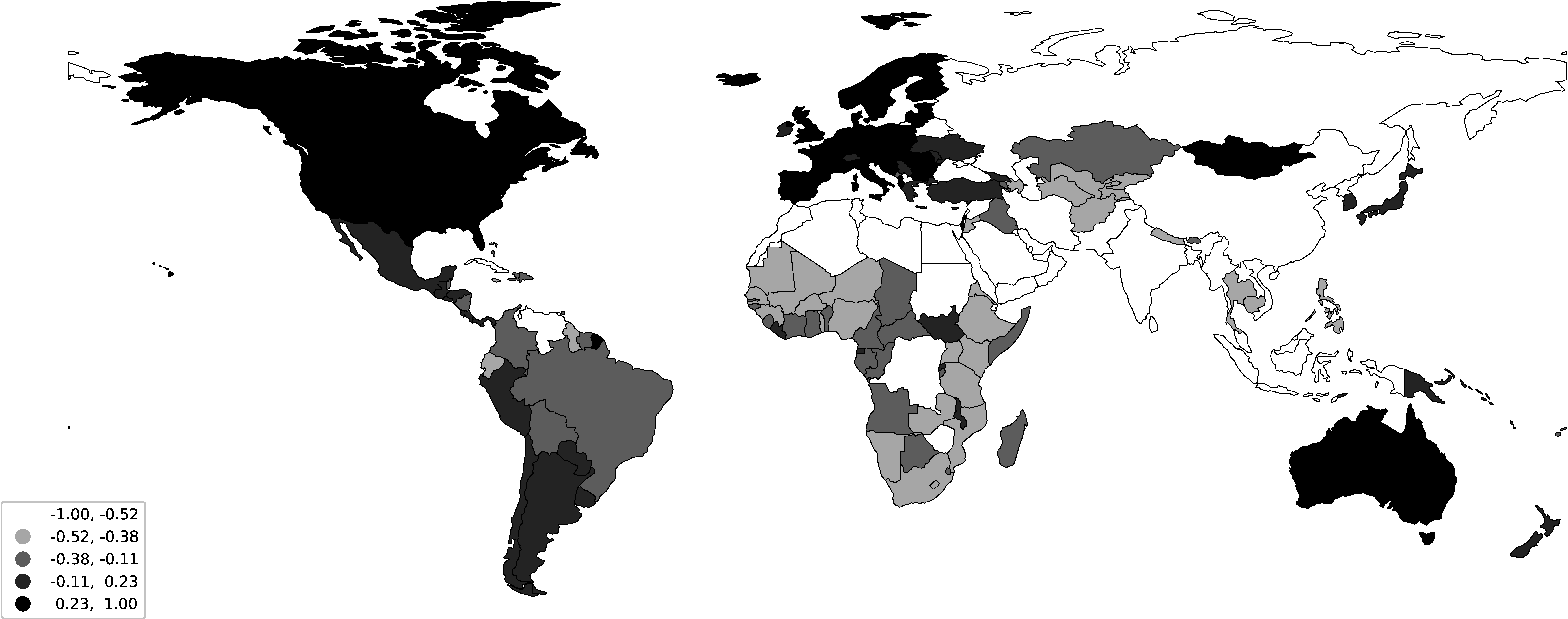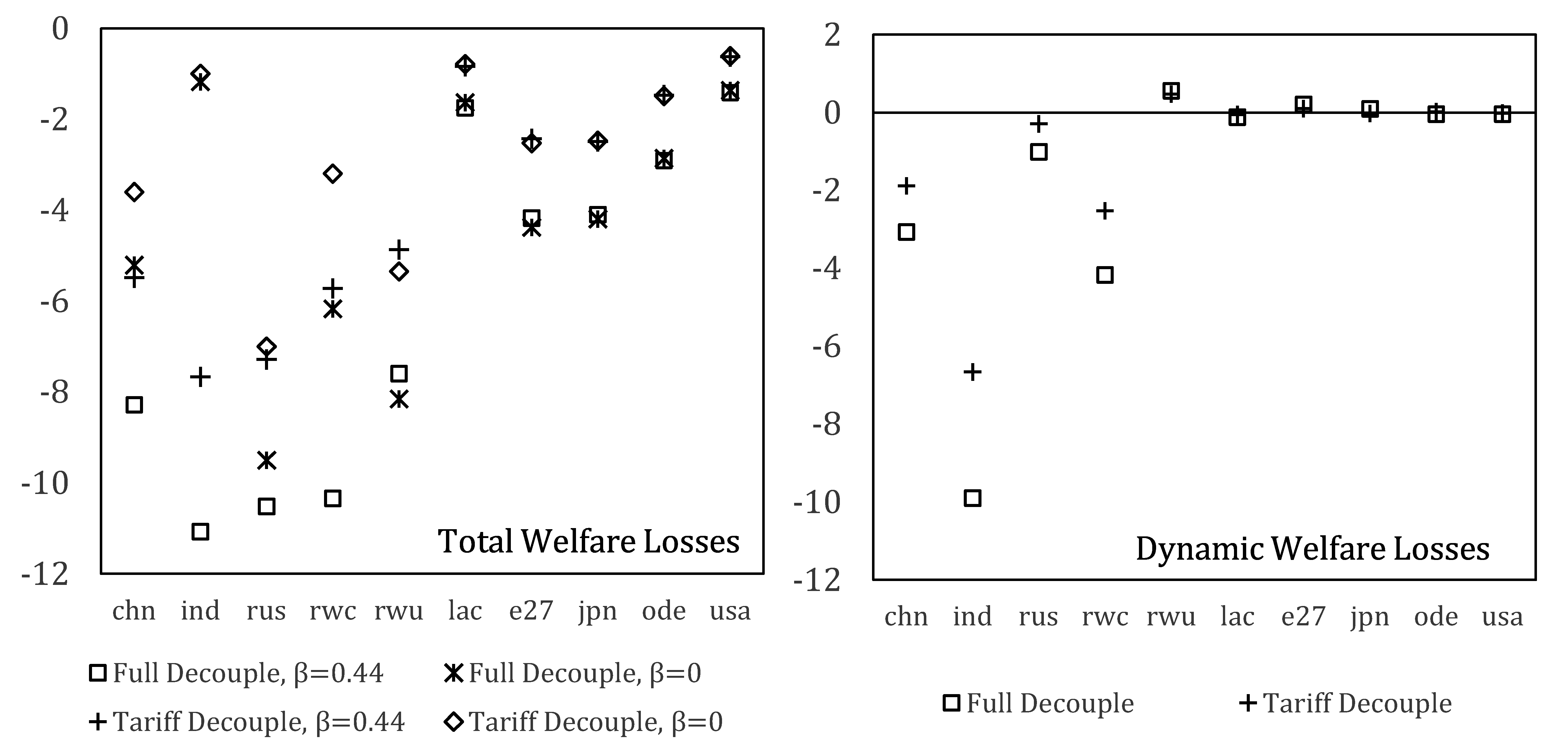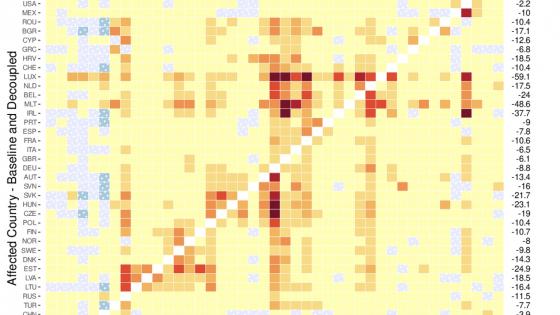Open markets and free trade have been a basic tenet of the international order emerging out of WWII. Over that period, a large consensus on the benefits of lower trade costs and prioritising gains from trade led to a continuous deepening of the international trade regime. With the end of the Cold War, that consensus moved eastwards. The EU enlarged to the east and many countries joined the WTO, including Russia and China.
However, the last decade has witnessed the beginning of a backlash against global trade integration. Political scientists conjecture that the emergence of China as a new superpower against the incumbent US might lead to strategic competition between these countries, one in which geopolitical forces and the desire to limit interdependence take primacy over win-win international cooperation.1
The Russian invasion of Ukraine led to sanctions imposed by a group of Western economies and has reinforced the debate on decoupling between blocs of regions. Although the sanctions are so far focused on Russia and Belarus, there is a risk that the conflict could widen and reinforce support for a policy driven by geopolitical considerations.2 This raises the question of how much real income might be lost if win-win international trade cooperation were given up and the global economy were to decouple, disintegrating into an Eastern bloc and a Western bloc.
Canonical models capture static welfare losses of increased trade barriers by foregoing the classical gains from trade (international labour division, scale effects, and reallocation effects between firms; see Arkolakis et al. 2012). However, some of the main concerns of policymakers and practitioners regarding the potentially detrimental effects of trade conflicts are abstracted away in standard models. For instance, these models typically assume a fixed technology distribution for domestic firms, thereby limiting gains from trade to static gains. This assumption renders it impossible to address some of the most important questions regarding the long-term consequences of continued trade conflict or receding globalisation – namely, reduced technology and knowhow spillovers that happen through trade.
Our new paper (Góes and Bekkers 2022) explores the potential impact of increased and persistent large-scale geopolitical conflicts between an Eastern and Western bloc on economic growth and technological innovation, building a multi-sector multi-region general equilibrium model of Bertrand competition with dynamic sector-specific knowledge diffusion. Following Buera and Oberfield (2020), who generalised the approach of Alvarez and Lucas (2013), the arrival of new ideas is modelled as a learning process from suppliers to a given sector in one country. Through engaging in international markets, domestic innovators have access to new sources of ideas, whose quality depends on the productivity of the source country-sector pair. Idea diffusion is mediated by the input-output structure of production, such that both sectoral intermediate input cost shares and import trade shares characterise the source distribution of ideas.3
Calibration
The strength of ideas diffusion in the model is controlled by a parameter that determines the speed of diffusion of ideas.4 We calibrate this parameter using a simulated method of moments approach, minimizing the difference between historical growth rates and simulated growth rates from 2004 to 2019. We show that the model can well replicate historical GDP growth rates (Figure 1).5
Figure 1 Historical and simulated GDP growth rates, average 2004-2019
Note: Country codes: chn, China; ind, India; rus, Russia; rwc, Rest of the Eastern bloc; rwu, Rest of the Western bloc; lac, Latin America and Caribbean; e27, EU; jpn, Japan; ode, Other developed; usa, US.
Counterfactual experiments
To explore the potential impact of a decoupling of the global economy, we classify different regions as belonging to either the US-centric or the Chinese-centric bloc, based on the Foreign Policy Similarity Database (FPSD). The database uses the United Nations General Assembly voting for a large set of countries to calculate foreign policy similarity indices for each country pair (Häge, 2011).6 Intuitively, the index takes countries who vote similarly in the United Nations as being similar in their foreign policy. We ranked country groups in terms of their foreign policy similarity with China and the US in order to place the ten regions of the model either in a Western or an Eastern bloc.7 The classifications do not reflect any value judgements by the authors on the various geopolitical views of the groups but do reflect the FPSD similarities and, of course, the core economic circumstances and relationships found in the model data.
Figure 2 shows that Europe, Canada, Australia, Japan, South Korea would fall in the Western bloc. Latin America and sub-Saharan Africa fall somewhere in between, with the former being closer to the US than the latter. India, Russia, and most of North Africa and Southeast Asia fall closer to China.8
Figure 2 Differential Foreign Policy Similarity Index
Notes: The map shows the difference between pairwise foreign policy similarity indices of the US and China, based on vote similarity in the United Nations General Assembly. More details of foreign policy similarity are in Häge (2011).
After classifying the regions into Eastern or Western influence blocs, two different policy experiments are designed: a full decouple scenario in which iceberg trade costs between different blocs rise to prohibitive levels (160%), and a tariff decouple scenario with tariffs increasing on average by 32% from the current cooperative to a non-cooperative level based on the work by Nicita et al. (2018).
The welfare costs of global decoupling
As expected, under all scenarios cross-bloc trade would fall dramatically after the introduction of the policy intervention, in the full decouple scenario by 98%. Figure 3 shows that both the increases in iceberg trade costs (full decouple) and retaliatory tariff hikes (tariff decouple) induce substantial welfare decreases for all countries. The effects, however, are asymmetric. While welfare losses relative to a baseline without decoupling in the Western bloc range between -1% and -8% (median: -4%), in the Eastern bloc they are in the -8% to -11% range (median: -10.5%) with a global projected real income loss of about 5%.
Figure 3 Cumulative percentage change in real income after the policy change, by 2040
Notes: Full decouple increases iceberg trade costs by 160% between blocs. Tariff decouple increases bilateral tariffs by 32% between blocs. β is a parameter controlling the diffusion of ideas.
The underlying factor driving the divergence in results between the two blocs is a difference in the evolution of productivity. Losing access to high-quality designs not only leads to static losses but also to a lower level of future innovation, which implies larger dynamic losses. Hence, countries in the Eastern bloc that currently have a lower level of productivity and have greater ties with innovative countries have larger losses. There is a stark contrast between the different evolution of the (Fréchet Distribution) location parameter of productivity in the regions in the two blocs (Figure 4). By cutting ties with richer and innovative markets, destination countries in the east shift their supply chains towards lower quality inputs, which, in turn, induce less innovation. By contrast, while countries in the Western bloc also suffer welfare losses, their innovation paths appear virtually unchanged after decoupling, suggesting that nearly all of their losses are static rather than dynamic. In the right panel of Figure 3, this is illustrated for the two poorer regions of the Eastern bloc with dynamic losses far outsizing static losses.
Figure 4 Cumulative percentage change in the Fréchet distribution location parameter after policy change, by 2040
Notes: sector codes: elm, Electronic Equipment; hmn, Heavy manufacturing; lmn, Light manufacturing; ots, Other Services; pri, Primary Sector; tas, Business services.
Consequences of bloc membership
An interesting question is what the implications are of bloc membership. We evaluate the implications of membership by comparing the effects of decoupling for one of the regions when switching blocs. We choose, solely to illustrate this point, a hypothetical switch for the LAC region. Figure 5 compares the results of identical decoupling scenarios for LAC, showing that welfare losses of decoupling in LAC are about 100-150% larger when it is included in the Eastern bloc. The domestic trade share in LAC is virtually identical under both settings (with LAC in the Western or the Eastern bloc), implying similar static welfare losses. This suggests that the increased losses from switching blocs stem almost entirely from dynamic losses.
Figure 5 Illustrative impacts on the cumulative percentage change in real income in the LAC Region by scenario.
Concluding remarks
We have shown that a disintegration of the global trading system into blocs driven by a shift in trade policies due to geopolitical considerations would be costly. And it would be much more costly than what conventional trade models omitting technology spillovers from trade would project. Furthermore, a scenario where all regions would have to choose between one of the two blocs as in the presented simulations (because of geopolitical reasons or because of incompatibility of technological systems) would be particularly costly for the lowest-income regions because they would have to forego beneficial spillovers from one of the two blocs.
There are two implications for the crucial role of the multilateral trading system. First, the current system with global trade rules guaranteeing open and free trade between all major players is of paramount importance, especially for the lowest-income regions. Second, if geopolitical considerations were to lead to a split of the big players into two blocs, it would be important that an institutional framework remains in place for smaller countries to keep open trade relations with both blocs, particularly in the case of the lowest income regions.
Authors’ note: The opinions expressed in this column should be attributed to its authors. They are not meant to represent the positions or opinions of the WTO and its members and are without prejudice to members' rights and obligations under the WTO. We were encouraged by Robert Koopman to undertake the research project on decoupling.
References
Alvarez, F E, F J Buera and R E Lucas, Jr. (2013), "Idea Flows, Economic Growth, and Trade", NBER Working Paper No. 19667.
Arkolakis, C, A Costinot and A Rodriguez-Clare (2012), "New Trade Models, Same Old Gains?", American Economic Review 102(1): 94-130.
Buera, F J and E Oberfield (2020), "The Global Diffusion of Ideas", Econometrica 88(1): 83-114.
Góes, C and E Bekkers (2022), "The Impact of Geopolitical Conflicts on Trade, Growth, and Innovation".
Häge, F M (2011), "Choice or Circumstance? Adjusting Measures of Foreign Policy Similarity for Chance Agreement", Political Analysis 19(3): 287-305.
Rachman, G (2022), "Xi Jinping faces a fateful decision on Ukraine", Financial Times, 14 March 2022.
Wei, L (2019), "Towards Economic Decoupling? Mapping Chinese Discourse on the China-US Trade War", The Chinese Journal of International Politics 12(4): 519-556.
Wyne, A (2020), "How to Think about Potentially Decoupling from China", The Washington Quarterly 43(1): 41-64.
Endnotes
1 See Wei (2019) and Wyne (2020) for reviews of the debate among respectively Chinese and American scholars about the shift in foreign policies towards each other.
2 See Rachman (2022) for an analysis of the risk that the conflict between Russia and the West extends to China.
3 Productivity in different sectors evolves according to a trade-share weighted-average of trade-partners sectoral productivities. Productivity thus evolves endogenously as a by-product to micro-founded market decisions – i.e. an externality that market agents affect with their behaviour but do not take into account when making decisions.
4 Initial productivity at the sector-country level is proportional to PPP-adjusted sectoral labour productivity combining two sources: the World Input-Output Database and the World Bank's Global Productivity Database.
5 Figure 1 indicates that China has been growing more than the model projects, whereas Rest of the Eastern bloc (rwc) has been growing less, which could be due to additional policies not captured by the model such as industrial policy, the level of education, and quality of institutions.
6 Initially our work was inspired by the possible "technological fragmentation" that could occur due to deep philosophical differences in approaches to cybersecurity and online privacy – particularly security discussions around the technology for 5G.
7 Results are essentially the same if we were to use Russia instead of China as the geopolitical centre of gravity of the Eastern bloc.
8 The similarity index with Russia as the central country of the Eastern bloc is very close to the similarity index with China as the central country of the Eastern bloc.








